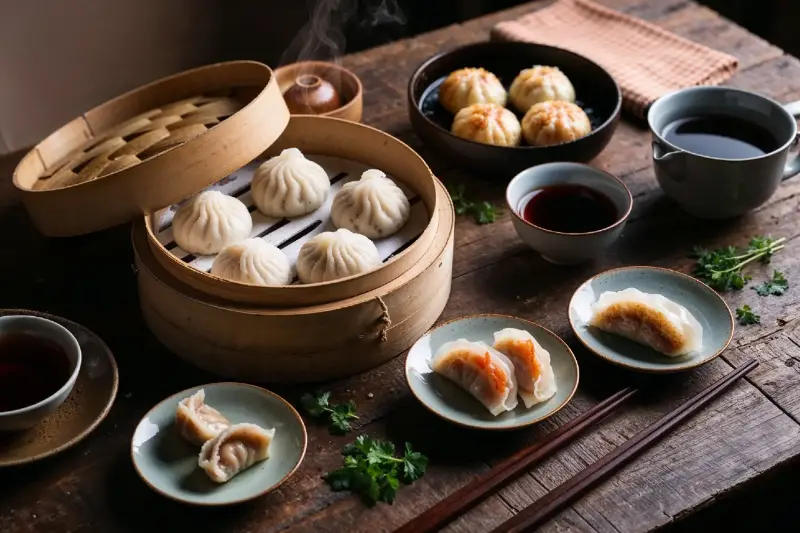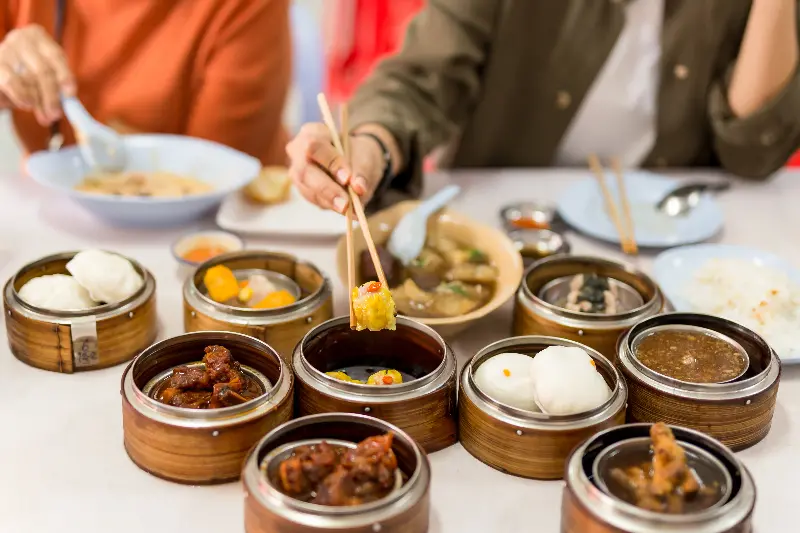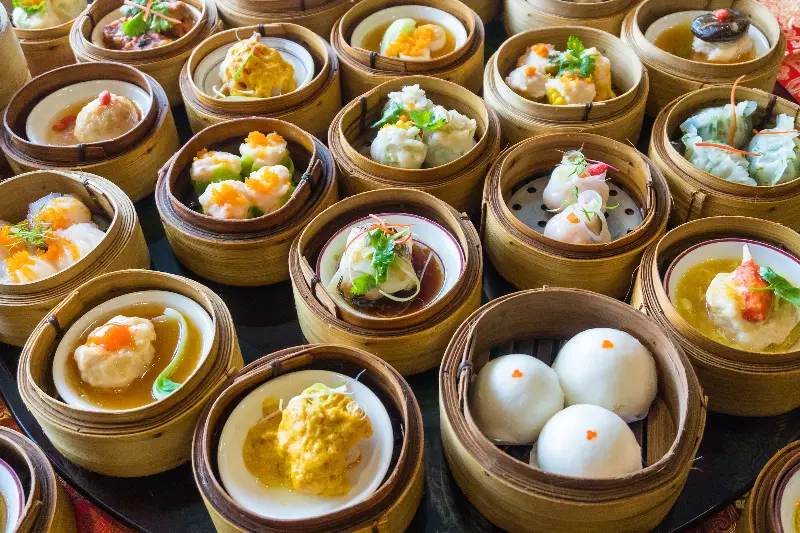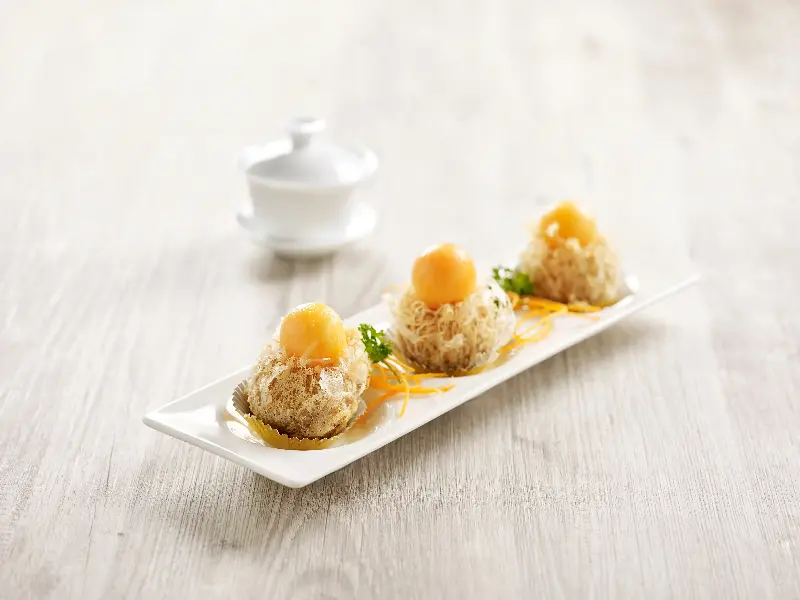Ask anyone who has enjoyed a true dim sum experience and they’ll tell you: dim sum is not just food, it’s a ritual. Originating from the Cantonese community of southern China, particularly in Hong Kong and Guangdong province, dim sum began as a centuries-old tradition tied deeply to tea culture. But far beyond just ‘small snacks with tea’, what has earned dim sum a special place in the hearts and stomachs of locals and globetrotters alike is the unparalleled blend of flavourful delights, social interaction, and centuries-old etiquette it offers.

The Social Heartbeat Of Dim Sum
At its core, dim sum is about bringing people together. Translated as “touch the heart”, these dishes are crafted to delight the senses but also to encourage communion, laughter, and conversation. Traditionally served in bustling teahouses called “yum cha” (literally “drink tea”), dim sum is a daytime affair—something to be savoured during the late mornings or early afternoons, most often on weekends when families gather.
In China, entire generations, from toddlers to grandparents, crowd around circular tables to share bamboo baskets of steamed dumplings and pots of fragrant tea. Unlike the formality of multi-course banquets, the dim sum table is lively and interactive. Servers push metal carts loaded with steaming baskets around the room, inviting diners to pick and choose what looks tempting. There’s almost an unwritten etiquette: don’t take the last dumpling unless you genuinely can’t resist, pour tea for others before yourself, and be ready to spin the “lazy susan” so everyone gets their share.
But perhaps the most fascinating aspect is the silent agreement that everyone tries a bit of everything. It fosters a spirit of sharing and curiosity, making the meal both a culinary adventure and an act of togetherness, whatever the culture or continent.

A Feast For The Senses
Dim sum is not a singular dish but an enormous range of bite-sized creations, carefully prepared to offer contrasting textures, bold aromas, and striking colours. The variety reflects Cantonese cuisine’s diversity and its celebration of flavour harmony.
The familiar faces are legendary: siu mai (open-topped pork and prawn dumplings), har gow (translucent prawn dumplings), delicate steamed buns filled with barbecued pork or sweet custard, and crispy spring rolls. But for every iconic bite, there are dozens of lesser-known marvels waiting discovery.
Just consider cheung fun, slippery rice noodle rolls that can be stuffed with char siu, prawns, or even fried dough, then drizzled with sweet soy sauce. Or lo mai gai, sticky rice parcels studded with chicken and mushrooms, tightly wrapped in lotus leaves for a grassy perfume. Don’t pass over feng zhao, or chicken feet, which have been slow-braised until meltingly tender—a textural treat for the brave. And for dessert, try the wobbly mango pudding or egg tarts, a colonial fusion with Portuguese roots. Each dish is a testament to Cantonese chefs’ creativity and the way dim sum continues to evolve.

Hidden Gems: Dishes You May Never Have Tried
Venturing a little off the beaten path, the dim sum world boasts dishes that surprise even ardent fans. One example is Wu Gok—taro croquettes stuffed with minced pork, encased in a feather-light, crisp shell. Then there’s Yu Dan, bouncy fish balls which offer a satisfying chew, particularly popular in Hong Kong.
Don’t miss Ngau Yuk Cheung Fun, a version of the aforementioned rice noodle rolls but filled with seasoned minced beef. Those with adventurous tastes will relish zha liang: fried dough sticks encased in soft rice rolls, creating a wonderful play between crunch and silkiness. Vegetarians, too, have much to celebrate, with items like crystal dumplings, their wrappers tinted with spinach or beetroot, concealing fillings of mushrooms and bamboo shoots.
Across regional boundaries, dim sum mutates deliciously. In Malaysia and Singapore, you might uncover lor mai gai with sambal for a spicy jolt. In the Chinatowns of London, New York, and Sydney, creative twists abound, like rainbow har gow made with beetroot wrappers or vegan takes on classic buns.

Rituals And Etiquette: The Unspoken Language Of Yum Cha
If you want to eat like a local and soak up the true ritual of dim sum, pay attention to the little things. Tea, for instance, is more than a drink; it’s the soul of the meal. A meal begins with selecting tea (jasmine, chrysanthemum, or oolong are classics), and pouring it for elders is a sign of respect.
Notice diners tapping two fingers on the table after someone refills their cup? That’s a gesture of gratitude, said to symbolise two kneeling hands in an old imperial tale. Many dim sum fans pick up items with chopsticks, but don’t be afraid to use your hands with certain buns or fried treats—just be neat.
Watch how regulars carefully open their baskets to let out steam before biting in, always sharing impressions with others. Even the act of declining a refill or waving off a cart is polite but understated.
From Ancient China To The World’s Cities
Perhaps what makes dim sum eternally fascinating is the way it bridges cultures. With migration, Cantonese communities took their beloved ritual abroad, sparking a global dim sum craze. Today, weekend tea houses can be found in Paris, San Francisco, Vancouver, and beyond, catering to both aficionados and curious foodies.
Whether you’re discovering it for the first time in a stylish city spot or reuniting with family at a local favourite, the joy of dim sum lies as much in the clinking teacups, huddled conversation, and anticipation of the next surprise steamed basket as it does in the food itself. In every bite, there’s a story—a union of history, artistry, and community. To savour dim sum is to join a living tradition that truly touches the heart.
